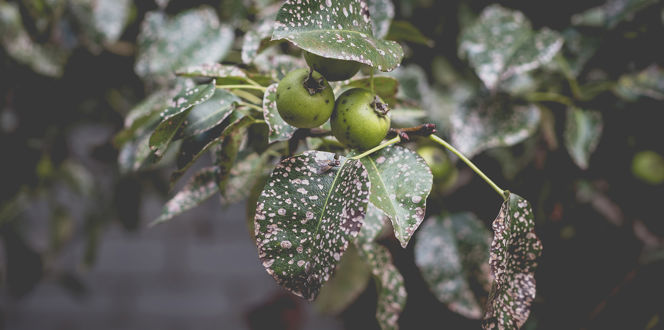Euonymus Scale Description:
Euonymus scale is a type of armored scale that can cause complete defoliation or even death.
Hosts:
Euonymus, including wintercreeper (Euonymus fortunei), ‘Vegetus’, ‘Coloratus’, and Japanese euonymus (E. japonicus), especially the variety, ‘Aureo’ and bittersweet (Celastrus ssp.), Eugenia, Buxus and Ilex, and Pachysandra. It does not attack burning bush (E. alatus).
Biology & Symptoms:
Inconspicuous scale insects suck nutrients from twigs and leaves. Leaves may have yellow halo-like spots (Figure A.) As leaves defoliate and branches die, shrubs look sparse. Euonymus scale can be found throughout the United States and Canada. Males congregate on leaf undersides and twigs. Males have a narrow, white cover (Figure B.) and can be mistaken for another scale species. Females are gray to dark brown and resemble a miniature oyster shell. Females favor twigs; so when looking for symptoms, examine the bark on lower portions of main branches for females. Each twig-dwelling female can produce up to 100 eggs. There are two generations in northern regions of the U.S. and Canada. In the southern part of the U.S., there are more euonymus scale generations per season. For example, in southern Louisiana, there are three generations of euonymus scale in one season.
Management:
1. Avoid planting susceptible euonymus species or cultivars.
2. Be sure to schedule horticultural oil applications when crawlers or young females may be present.
- For instance, in the Midwest, apply the first application in the first part of summer.
- Follow-up applications may be needed within 30- to 45-day intervals.
- This species spends the winter as a female, which makes it vulnerable to dormant season horticultural oil applications.
3. Lady beetles and parasitic wasps are natural predators of the euonymus scale. The horticultural oil won’t harm them because the oil doesn’t leave a toxic residue.
4. To reduce stress from this pest, keep euonymus watered during a drought.





